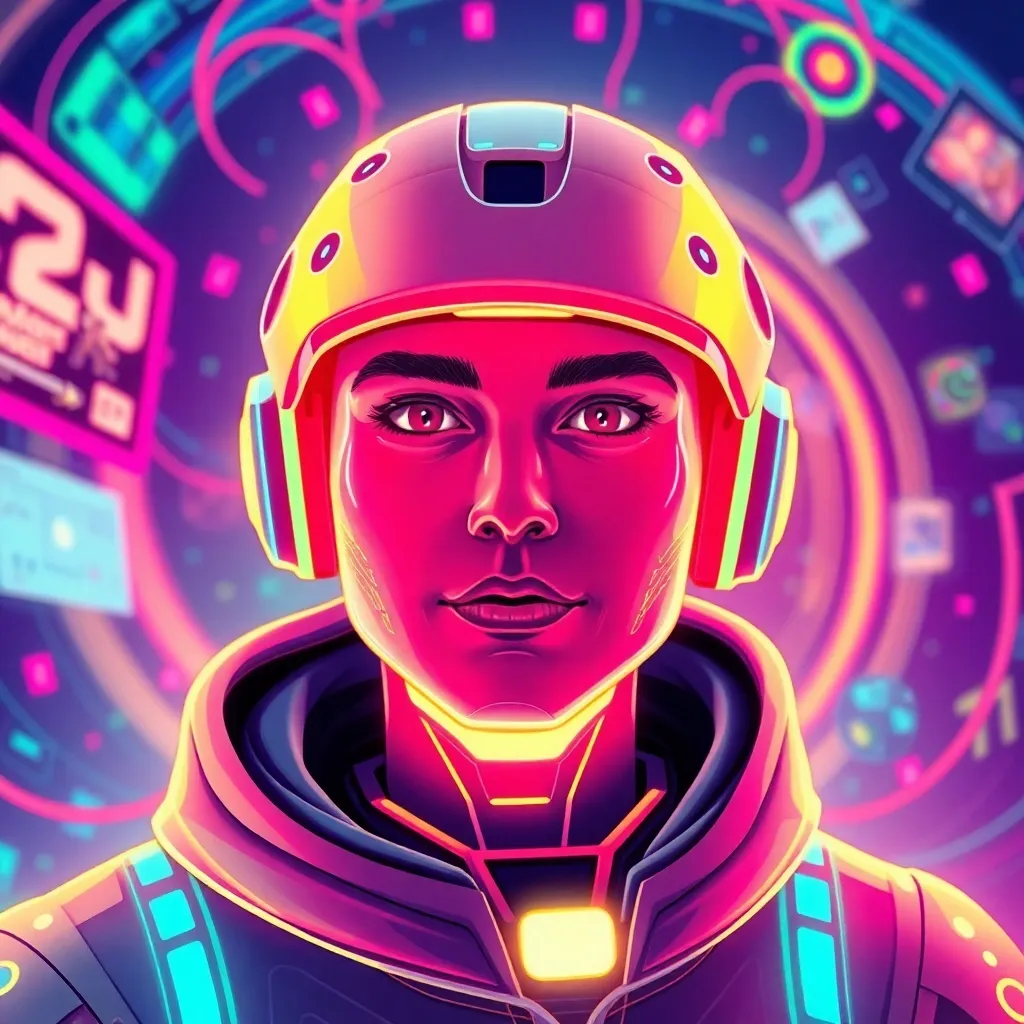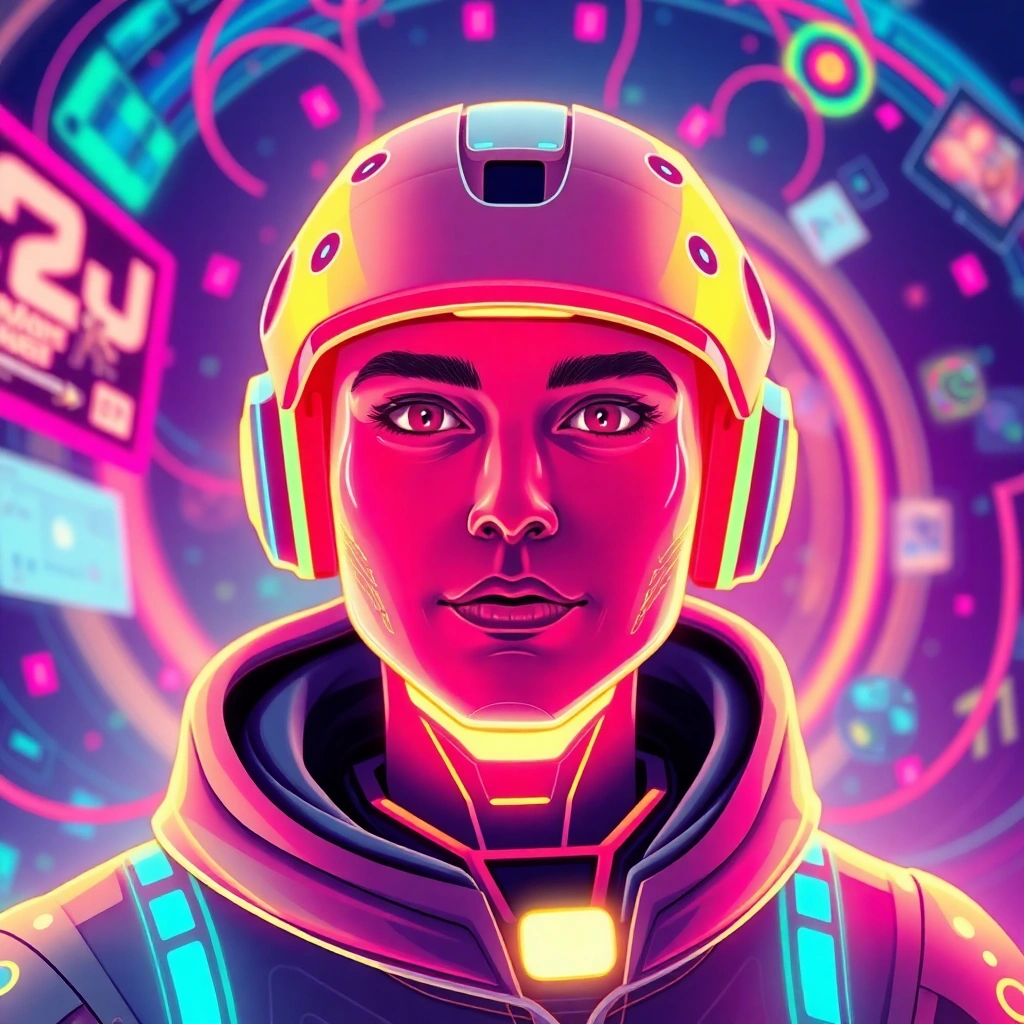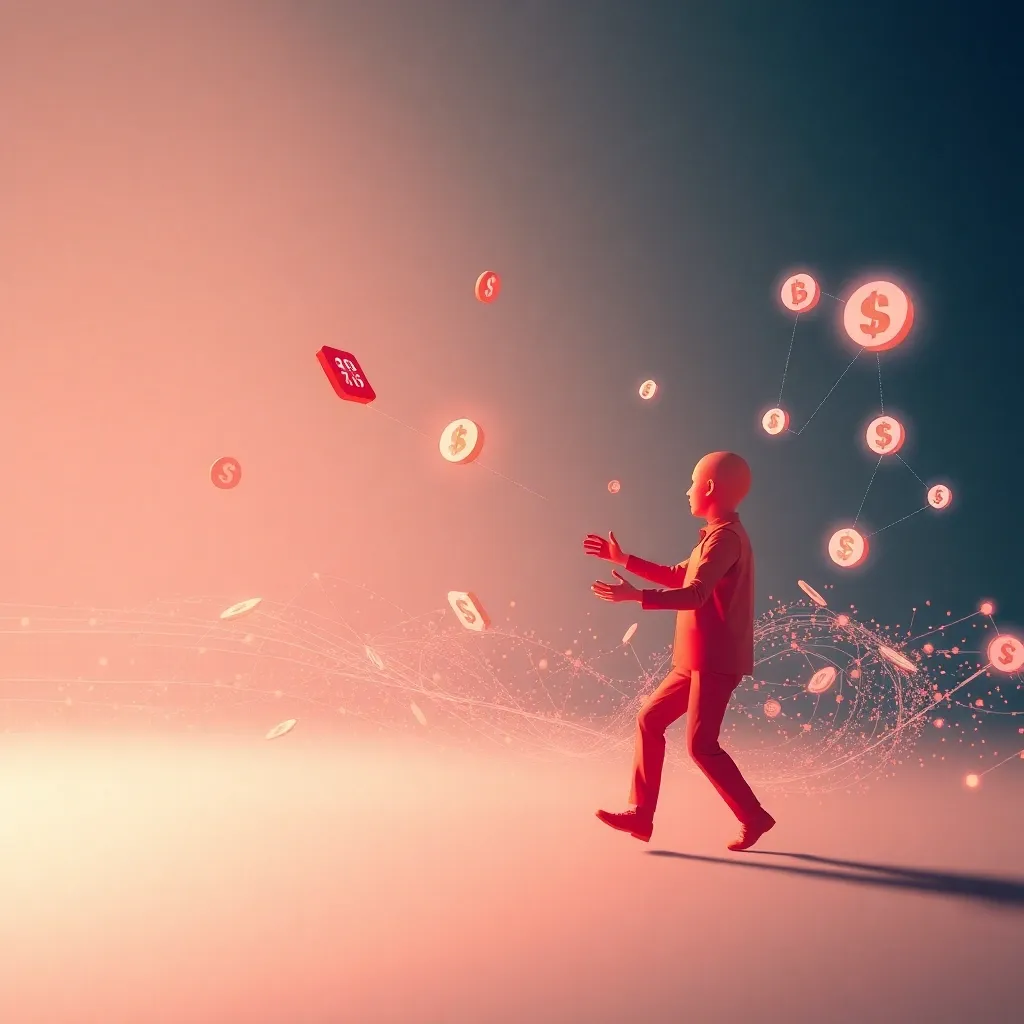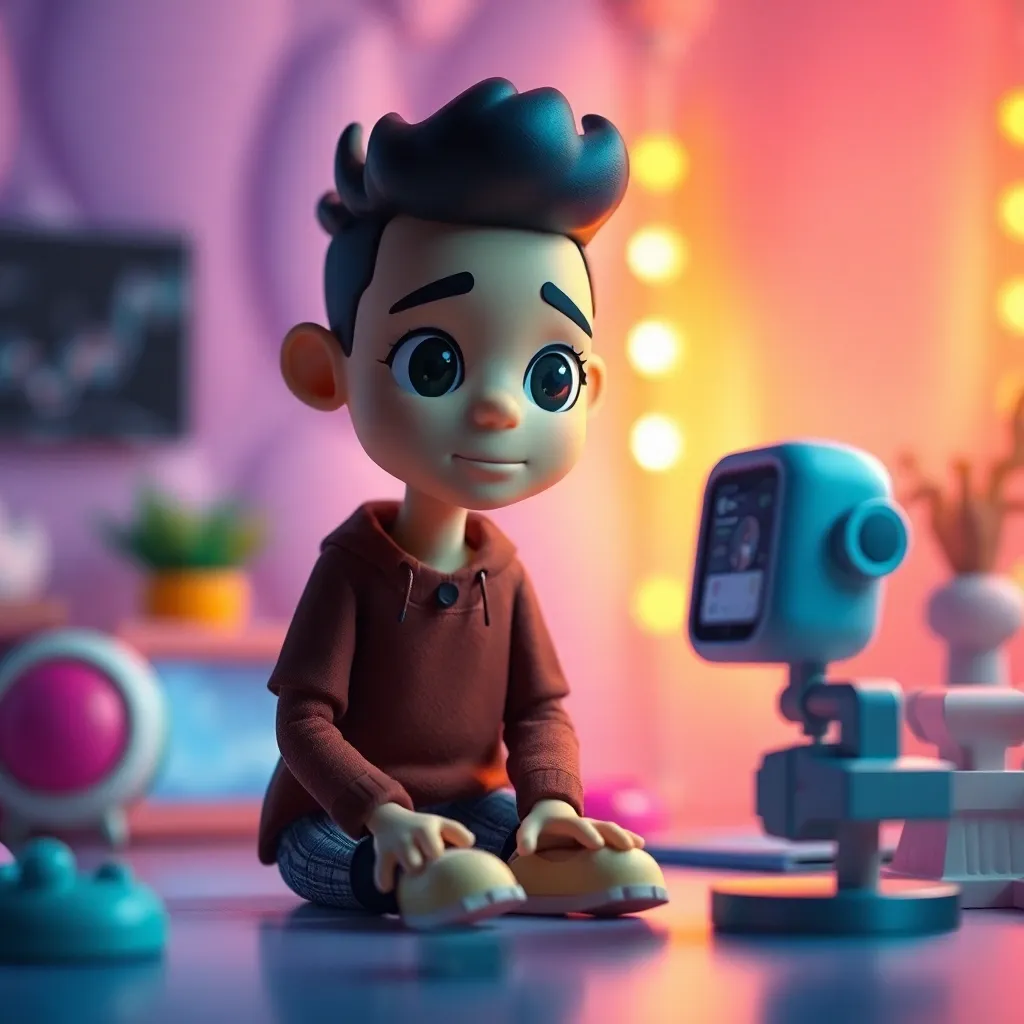Discover Role of AI in Content Personalization
- Introduction: Why Personalization Is the New Marketing Baseline
- The Core Opportunity: From Generic to Intent-Driven Experiences
- The AI Stack for Personalization In Digital Marketing
- AI-Driven Audience Segmentation: From Profiles to Predictive Cohorts
- AI For Behavioral Insights: See the Signals You’re Missing
- Content Customization Strategies: Templates, Tokens, and Decision Rules
- Dynamic Content Generation: Real-Time Relevance at Scale
- Enhancing User Experience With AI: From Journeys to Micro-Interactions
- Targeted Marketing Campaigns: Orchestrate Precision at Every Touchpoint
- Improving Conversion Rates With AI: Test, Learn, and Scale
- Data, Privacy, and Governance for Responsible Personalization
- From Strategy to Delivery: How Mad Bot Art Operationalizes AI Personalization
- Example: A Full-Funnel Personalization Play
- Action Plan: 90 Days to Production-Grade Personalization
- Best Practices: Make Personalization Durable, Not Just Flashy
- How Mad Bot Art Fits Into Your Stack
- Frequently Asked Questions
- The Mad Bot Art Advantage for Teams
- Putting It All Together: A System for Sustainable Growth
- Conclusion: Personalization That Performs—and Scales

Discover Role of AI in Content Personalization
Introduction: Why Personalization Is the New Marketing Baseline
Personalization isn’t a nice-to-have anymore—it’s the minimum standard your audience expects. Whether they’re browsing a landing page, opening an email, or swiping through a feed, people want content that reflects their needs, intent, and timing. That’s where AI changes the game. With the right data and tooling, brands can deliver Personalized Marketing Content at scale, intelligently adapt creative per audience, and run precision Targeted Marketing Campaigns that actually convert. If you need a primer on tying AI personalization to broader marketing strategy, see our guide on AI-driven loyalty content and the companion playbook for strategic content alignment.
In this article, we’ll unpack how AI-driven Audience Segmentation, Dynamic Content Generation, and Content Customization Strategies come together to drive measurable results. We’ll also show how platforms like Mad Bot Art provide an end-to-end studio to script, design, animate, narrate, and ship brand-ready media from one browser-based workspace—making Personalization In Digital Marketing operational, collaborative, and profitable.
By the end, you’ll have a roadmap for Enhancing User Experience With AI, extracting AI For Behavioral Insights from your data, and Improving Conversion Rates With AI without ballooning headcount or toggling among dozens of tools.
The Core Opportunity: From Generic to Intent-Driven Experiences
Mass messaging is efficient for production but expensive for performance. Audiences differ by context, needs, and readiness. AI enables marketers to:
- Understand motivations and micro-moments through AI For Behavioral Insights.
- Build AI-driven Audience Segmentation that clusters users by shared attributes, recency, frequency, and predicted value.
- Orchestrate Targeted Marketing Campaigns that adapt channel, timing, and creative to each cohort.
- Scale Dynamic Content Generation to serve variations in copy, imagery, video, and offers.
- Deliver Personalized Marketing Content consistently across the funnel—from ads to post-purchase communications.
This shift reframes personalization from a creative task to a systems strategy, powered by data, models, and operational tooling.
The AI Stack for Personalization In Digital Marketing
AI-driven personalization rests on five pillars:
- Data readiness: First-party data, consent signals, and event tracking.
- Audience modeling: Clustering and propensity modeling for AI-driven Audience Segmentation.
- Content systems: Templates, variants, and Content Customization Strategies across formats.
- Decisioning: Real-time orchestration to select the right content for the right audience.
- Measurement: Lift, incrementality, and Improving Conversion Rates With AI through iterative testing.
Platforms like Mad Bot Art unify these layers from strategy to delivery: briefs become multimodal output (text, image, video, voice, SEO content) without bouncing between tools. Explore the unified studio at Mad Bot Art for an end-to-end approach to AI In Audience Engagement.
AI-Driven Audience Segmentation: From Profiles to Predictive Cohorts
Why segmentation must become predictive
Static personas break under real-world complexity. AI-driven Audience Segmentation groups users not only by demographics but also by behavior, recency, product interest, and predicted outcomes (e.g., likelihood to purchase, churn, or upgrade). This approach supports Targeted Marketing Campaigns that match messaging to intent.
How to build it
- Aggregate first-party data: Site analytics, CRM, product events, campaign responses.
- Engineer features: Frequency of actions, recency, average order value, browsing depth.
- Train clustering models: K-means, DBSCAN, or hierarchical clustering to find natural groupings.
- Add predictive layers: Uplift or propensity scoring to prioritize audiences by expected response.
- Operationalize: Map cohorts to content variations through Content Customization Strategies.
Practical use cases
- New visitor vs. returning power user: Serve different onboarding flows and offers.
- High-value subscribers: Upgrade messaging with premium features and early access.
- Dormant users: Re-engagement offers triggered by inactivity thresholds.
With robust AI-driven Audience Segmentation, your personalization engine can consistently serve Personalized Marketing Content that drives engagement and revenue.
AI For Behavioral Insights: See the Signals You’re Missing
Turning raw data into actions
Behavioral analytics powered by AI surfaces patterns humans can’t easily spot: micro-conversions, friction points, and early churn indicators. Use AI For Behavioral Insights to:
- Attribute content performance at the audience and asset level.
- Discover paths to purchase and abandoned step bottlenecks.
- Identify content themes that correlate with higher conversion or retention.
Outcome-oriented analysis
- Improve onboarding: Find the first-week actions that predict long-term value.
- Email sequencing: Identify which combinations of subject lines, offers, and time-of-day drive lift.
- Creative resonance: Detect imagery and tone patterns that spark AI In Audience Engagement.
When you systematize AI For Behavioral Insights, you unlock a sustainable loop: better data informs better models—and better models generate better Personalized Marketing Content.
Content Customization Strategies: Templates, Tokens, and Decision Rules
The engine behind scale
It’s not enough to know who to target—you need a scalable way to tailor content. Content Customization Strategies provide the structure to adapt copy, visuals, and offers per audience, channel, and device.
- Templates and slots: Design layouts with swap-in text and media zones.
- Tokens and rules: Insert audience-specific tokens like {industry}, {persona}, {benefit}, {pain_point}.
- Variant libraries: Maintain tone, image, and CTA variations aligned with brand kits.
- Real-time decisioning: Use audience and context signals to dynamically serve the best variant.
Implementation blueprint
- Audit journeys: Identify high-impact surfaces for Dynamic Content Generation (homepage hero, email hero image, product modules, paid social).
- Create variants: For each surface, write 3–5 copy and creative variations mapped to segments.
- Automate selection: Use AI to match variant to audience and predicted outcome.
- Govern and approve: Keep everything within brand and legal guardrails.
A robust Content Customization Strategy ensures Personalization In Digital Marketing is efficient, consistent, and measurable.
Dynamic Content Generation: Real-Time Relevance at Scale
Dynamic Content Generation uses AI to produce or retrieve the right content at the moment of interaction. That could be a product recommendation, a personalized hero message, a localized image, or an entire personalized email.
- Channels: Web, mobile apps, email, push, in-product messaging, and programmatic advertising.
- Signals: Referrer, geo, device, behavior history, cohort, inventory status, and predicted intent.
- Creative: On-brand copy, imagery, short-form video, voice-over snippets, and avatars.
With Dynamic Content Generation, you reduce manual effort while increasing quality and relevance. Platforms like Mad Bot Art enhance this by offering curated model presets and prompt enhancers that keep generation on-brand and conversion-oriented.
Enhancing User Experience With AI: From Journeys to Micro-Interactions
Great personalization feels effortless. Enhancing User Experience With AI is about giving users what they need faster, with fewer steps and greater clarity.
- Navigation: Reorder menus or recommend shortcuts based on frequent actions.
- Search: Semantic search and query intent modeling.
- Merchandising: Predictive sorting and personalized recommendations.
- Support: AI copilots offering contextual guidance and content suggestions.
- Accessibility: Auto-captioning, language localization, and voice-friendly formats.
Integrating these patterns not only boosts AI In Audience Engagement but also reduces friction that slows down funnel progression.
Targeted Marketing Campaigns: Orchestrate Precision at Every Touchpoint
Campaigns that resonate combine targeting, creative, channel mix, and timing. AI helps you orchestrate Targeted Marketing Campaigns that deliver the right content at the right time.
- Creative fit: Tailor assets per audience needs using Content Customization Strategies.
- Channel fit: Use modeling to assign channel priorities by expected lift.
- Timing: Send windows determined by historical engagement and predicted availability.
- Budget allocation: Dynamic spend rebalancing toward high-performing cohorts.
The result: less waste, better experience, and measurable revenue impact.
Improving Conversion Rates With AI: Test, Learn, and Scale
AI isn’t just for targeting and generation; it’s your optimization engine. Improving Conversion Rates With AI means constant experimentation guided by predictive signals.
- Multi-armed bandit testing replaces static A/B tests for faster learning.
- Predictive attribution helps you assign credit across journeys to invest wisely.
- Uplift modeling finds users most likely to respond—not just those who would convert anyway.
Apply these methods across your Dynamic Content Generation strategy and watch win rates compound.
Data, Privacy, and Governance for Responsible Personalization
Personalization In Digital Marketing relies on trust. To scale responsibly:
- Collect only consented first-party data and honor user preferences.
- Anonymize and minimize data for modeling.
- Apply role-based access controls and audit trails.
- Maintain brand kits, legal disclaimers, and approval workflows to govern outputs.
- Provide clear opt-outs for personalized experiences.
Platforms like Mad Bot Art embed governance—brand standards, approvals, and analytics—so creative teams can scale safely while upholding compliance.
From Strategy to Delivery: How Mad Bot Art Operationalizes AI Personalization
If your personalization strategy lives in one tool and your production workflows live in another, your teams will slow down. Mad Bot Art closes that gap by unifying planning, creation, and delivery in one browser-based workspace.
- Unified AI production studio: Script, design, animate, narrate, and ship media without switching tools.
- Multimodal depth: Text, image, video, audio, avatars, style transfer, and SEO all in a single stack.
- On-brand generation: Curated model presets and prompt enhancers keep outputs aligned with your brand voice.
- Collaboration and governance: Autosave-by-default editors, versioned projects, approvals, and real-time collaboration reduce production risk.
- SEO workspace: Competitor analysis, article drafting, and refinement tools sit next to creative production for holistic growth.
- Monetization and analytics: Credit wallets, Stripe billing, and profitability dashboards track spend, usage, and ROI per account.
Mad Bot Art bridges strategy to execution for Personalized Marketing Content, AI-driven Audience Segmentation, and Dynamic Content Generation. See how teams orchestrate Targeted Marketing Campaigns and AI In Audience Engagement workflows at Mad Bot Art
Example: A Full-Funnel Personalization Play
-
Audience modeling
- Cluster users into six cohorts: first-time visitors, product comparers, discount seekers, loyal customers, dormant subscribers, and high-LTV prospects using AI-driven Audience Segmentation.
-
Behavioral insights
- Use AI For Behavioral Insights to identify that product comparers respond best to side-by-side feature visuals and third-party trust signals.
-
Creative system
- Create Content Customization Strategies with variant libraries for each cohort, including tailored benefit statements, hero images, and CTAs.
-
Orchestration
- Serve Dynamic Content Generation on site: comparers see a comparison widget; loyal customers see early access offers; discount seekers see time-bound bundles.
-
Campaigns
- Launch Targeted Marketing Campaigns: remarketing for comparers with feature cards; win-back emails for dormant subscribers with concise “what you missed” highlights.
-
Optimization
- Run uplift modeling to focus spend on cohorts most sensitive to messaging; keep Improving Conversion Rates With AI via continuous testing.
-
Measurement
- Track incremental revenue per cohort, creative variant lift, and channel contribution to AI In Audience Engagement.
Action Plan: 90 Days to Production-Grade Personalization
Days 1–30: Foundation
-
Data and consent
- Audit event tracking and consent flows.
- Define the minimum dataset for AI For Behavioral Insights and attribution.
-
Strategy and governance
- Draft audience hypotheses and success metrics.
- Set brand kits, tone guardrails, and approvals in your studio.
-
Tools
- Stand up your unified workspace in Mad Bot Art; connect analytics and content repositories via the platform’s connector registry.
-
Quick wins
- Implement Dynamic Content Generation for homepage hero and top email templates.
-
KPIs
- Baseline conversion, engagement, and content production cycle time.
Days 31–60: Acceleration
-
AI modeling
- Deploy AI-driven Audience Segmentation and propensity scoring.
- Build Content Customization Strategies with tokenized templates across priority surfaces.
-
Campaigns
- Launch two Targeted Marketing Campaigns tailored to highest-value segments.
-
Optimization
- Start Improving Conversion Rates With AI using multi-armed bandits on creative variants.
-
Process
- Enforce versioned projects, autosave, and approvals for consistency across teams.
Days 61–90: Scale
-
Multichannel rollout
- Extend Dynamic Content Generation to ads, push, and in-product messaging.
-
Advanced analytics
- Implement uplift modeling and creative-level attribution with AI For Behavioral Insights.
-
Monetization
- Track spend, usage, and ROI per account through Mad Bot Art’s profitability dashboards.
-
Roadmap
- Add localized variants and avatars; expand to 20+ models via Mad Bot Art’s swap-friendly architecture.
Best Practices: Make Personalization Durable, Not Just Flashy
- Start narrow, scale fast: Prove lift on a few surfaces before expanding.
- Respect signal quality: Better inputs drive better Personalized Marketing Content.
- Keep humans in the loop: Editorial oversight ensures on-brand outputs.
- Measure incrementality: Don’t confuse correlation with causation.
- Document playbooks: Codify Content Customization Strategies and decision rules.
- Align incentives: Reward teams for cohort-level KPIs, not just volume.
- Bake in governance: Legal, brand, and compliance guardrails from day one.
These practices create a sustainable engine for Personalization In Digital Marketing and AI In Audience Engagement.
How Mad Bot Art Fits Into Your Stack
Mad Bot Art is designed for marketing-grade polish and operational rigor:
-
Plan to profit in one place
- “One AI studio to plan, produce, and profit from every campaign asset.”
-
Brand-safe at scale
- “Bring your brand voice to any medium in minutes—governed, collaborative, billable.”
-
Model agility
- “Swap between 20+ frontier models without rewriting pipelines.”
-
Delivery ready
- Export MP4, PDF, ZIP, and more—built for teams that ship.
By pairing audience intelligence with on-brand creation, Mad Bot Art helps teams deliver Personalized Marketing Content, orchestrate Targeted Marketing Campaigns, and keep Improving Conversion Rates With AI—all without adding headcount. Learn more at Mad Bot Art
Frequently Asked Questions
What data do I need to start?
Begin with first-party web and product analytics, email engagement, and CRM attributes. This is enough for AI-driven Audience Segmentation and early AI For Behavioral Insights. Add depth over time: customer feedback, support interactions, and transactional history.
How do I avoid “creepy” personalization?
Focus on relevance over revelation. Don’t expose sensitive inferences. Provide clear value and easy opt-outs. Govern content through brand kits, approvals, and legal reviews. Enhancing User Experience With AI should reduce friction—not feel invasive.
How quickly can I see results?
Most teams see early lift within 30–60 days by implementing Dynamic Content Generation on homepage and email surfaces, then expanding to full-funnel Targeted Marketing Campaigns.
Do I need a data science team?
Helpful but not mandatory. Many platforms, including Mad Bot Art, offer curated presets and guided workflows that democratize AI For Behavioral Insights and Creative generation. Start with managed models and evolve to custom as your needs grow.
How do I measure success?
Track lift in conversion, average order value, and retention by cohort. Attribute creative-level impact. Use incrementality testing and bandit algorithms for Improving Conversion Rates With AI across Content Customization Strategies.
The Mad Bot Art Advantage for Teams
-
Marketing and creative leads
- Rapid assets without headcount; standardized quality across markets; governed collaboration.
-
In-house production teams
- Versioned projects, autosave editors, and approvals reduce risk; real-time collaboration accelerates cycles.
-
Agencies
- Package AI services with clear usage billing; credit wallets and Stripe integration simplify profitability.
-
SaaS and media companies
- Embed AI content flows into products; maintain SEO pipelines next to creative production.
Mad Bot Art’s extensible architecture—connector registry and modular services—keeps new model integrations lean, helping teams stay ahead without technical sprawl.
Putting It All Together: A System for Sustainable Growth
- Use AI-driven Audience Segmentation to identify the right cohorts.
- Apply AI For Behavioral Insights to prioritize opportunities and content themes.
- Operationalize Content Customization Strategies so personalization is fast and consistent.
- Build Dynamic Content Generation across channels for real-time relevance.
- Run Targeted Marketing Campaigns that adapt spend, timing, and creative to cohort response.
- Keep Enhancing User Experience With AI so journeys feel effortless.
- Commit to Improving Conversion Rates With AI through ongoing experimentation and measurement.
This full-stack approach transforms Personalization In Digital Marketing from a one-off test into a competitive moat.
Conclusion: Personalization That Performs—and Scales
AI has moved personalization from artisanal to industrial. When you combine audience intelligence, on-brand generation, and rigorous governance, you can deliver Personalized Marketing Content that delights users and drives revenue. The path is clear: leverage AI-driven Audience Segmentation, turn AI For Behavioral Insights into action, and power Dynamic Content Generation across your funnel. As you orchestrate Targeted Marketing Campaigns and keep Enhancing User Experience With AI, you’ll be consistently Improving Conversion Rates With AI and building durable growth.
If you’re ready to execute this vision end to end—from brief to multimodal assets to ROI—explore how the Mad Bot Art platform unifies planning, production, governance, and monetization at Mad Bot Art It’s a single AI studio to plan, produce, and profit from every campaign asset—so you can make Personalization In Digital Marketing both powerful and practical.




